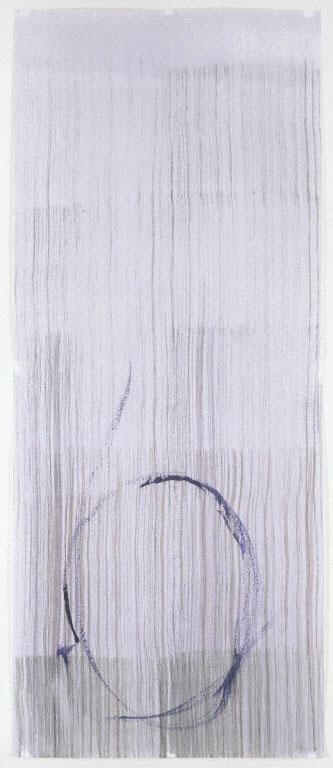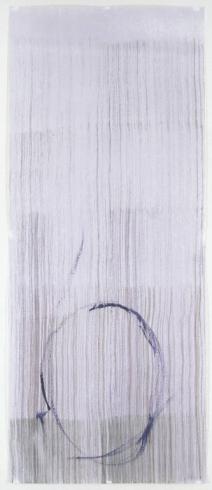John Cage
at the Phillips

Three watercolors by avant-garde composer John Cage—a close friend and collaborator of Jasper Johns—are on view with other works from the Phillips by contemporaries Mark Tobey and Morris Graves.
About the Exhibition
A musician by training, John Cage (1912–92) explored throughout his life many forms of artistic expression using chance operations and the system of random numbers from the ancient Chinese Book of Changes. Cage created his first watercolors at Mountain Lake Workshop in Virginia in 1988. These open, lyrical abstractions brought color, gesture, and improvisation to his music, art, and texts.
Guided by the Book of Changes, Cage began tracing stones to make abstract patterns. Intrigued by these experiments, painter Ray Kass invited Cage to Mountain Lake for a weeklong workshop during which Cage created four series of watercolors using stones from nearby New River. Cage’s approach to his New River Watercolors was shaped by a dream about painting the circumference of a stone with a feather.
New River Watercolors Series III began with a 36-inch-wide roll of paper, a flat stone approximately nine inches in diameter, and a guinea hen glide-wing feather. In the first watercolor, Cage used the feather to paint the partial perimeter of a stone, then moved the stone and varied the color for the following two sheets. The Book of Changes was used to determine the placement of the stone, the size of the paper, and the number of colors and washes in the work, but experimentation was allowed during the process. Cage unified the series by painting a neutral gray wash on each sheet. The triptych appears to unfold as a sequence in time, a series of movements in space. These watercolors find visual kinship in the meditative works of Morris Graves and Mark Tobey, also on view. Contemporaries of Cage, the group met in Seattle in the 1930s where they forged an intellectual and spiritual relationship that inspired their work.
In conjunction with Jasper Johns: Variations on a Theme and the citywide John Cage Centennial Festival.
